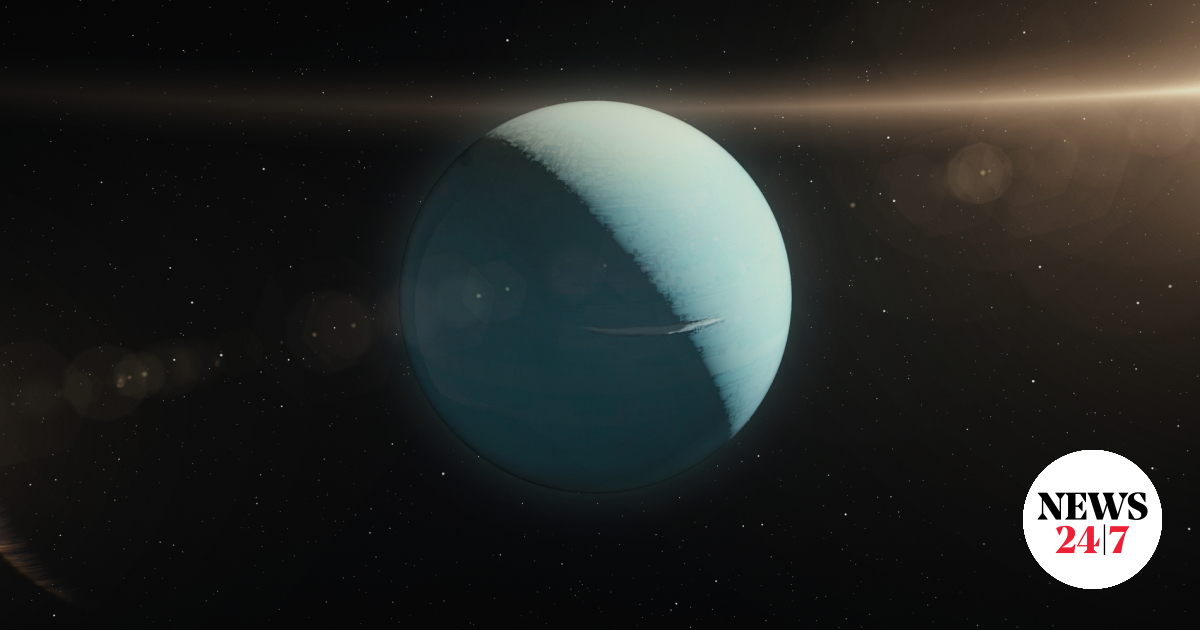
New research reveals The true colors of Neptune and Uranus, Which until recently appeared in illustrations in completely different shades.
The first images have been captured of the two icy giant planets on the outer edge of our solar system During NASA's Voyager 2 mission, which approached Uranus in 1986 and Neptune in 1989. Voyager 2 is the only one to have passed by both planets.
In these shots, Neptune appears in dark blue. What is known now, with restored downloads, is how The two planets have a similar blue-green color. Both also feature atmospheric haze, with Neptune appearing bluer due to a thinner layer of haze.
Colors restored It has now been confirmed by data from other instruments, such as the Hubble Space Telescope, As well as other Voyager missions.
In practice, the researchers reprocessed the Voyager images, to match what our eyes actually see, The imaging systems in telescopes and spacecraft have filters, and they can be used to highlight certain features more than others.
Essentially, Voyager 2's images were monochrome and then processed close to the frames we see in years past.
The true color of Uranus and Neptune
Patrick Irwin via Oxford University
“Although known images of Uranus from Voyager 2 were published in a form closer to 'true' color, images of Neptune were actually enhanced. Therefore, they were artificially made very blue. Although artificially saturated color was known in At that time, among planetary scientists, images were published with comments explaining it, but this distinction was lost over time. Lead author Professor Patrick Irwin, from the University of Oxford.
“By applying our model to the original data, we were able to reconstruct the most accurate color representation of both Neptune and Uranus.”
Thanks for the comments From Hubble and the Multi-Unit Spectroscopic Explorer (MUSE) at the European Southern Observatory's Very Large Telescope, They were able to achieve the true colors. The instruments collected the planet's light spectrum and used it to make Voyager's images more faithful to our view.
It is worth noting that The sky changes colors from green to blue during its distinct seasons. Notably, the study also showed that Uranus is slightly greener during summer and winter when one of its poles faces the sun. In contrast, in spring and fall, when the sun is above the equator, its color is bluer.
The team speculates that the haze of methane ice particles and the lack of methane at Uranus' poles could explain the difference in colors. Decades of observations show the subtle changes that occur as the planet makes its 84-year journey around the sun.
Professor Patrick Irwin added: “This is the first study to combine a quantitative model with imaging data to explain why the sky changes color during its orbit.”
The study was published in detail in Monthly Notices of the Royal Astronomical Society.

“Total alcohol fanatic. Coffee junkie. Amateur twitter evangelist. Wannabe zombie enthusiast.”





More Stories
Is this what the PS5 Pro will look like? (Image)
Finally, Windows 11 24H2 update significantly boosts AMD Ryzen – Windows 11 performance
Heart Surgeon Reveals The 4 Things He ‘Totally Avoids’ In His Life